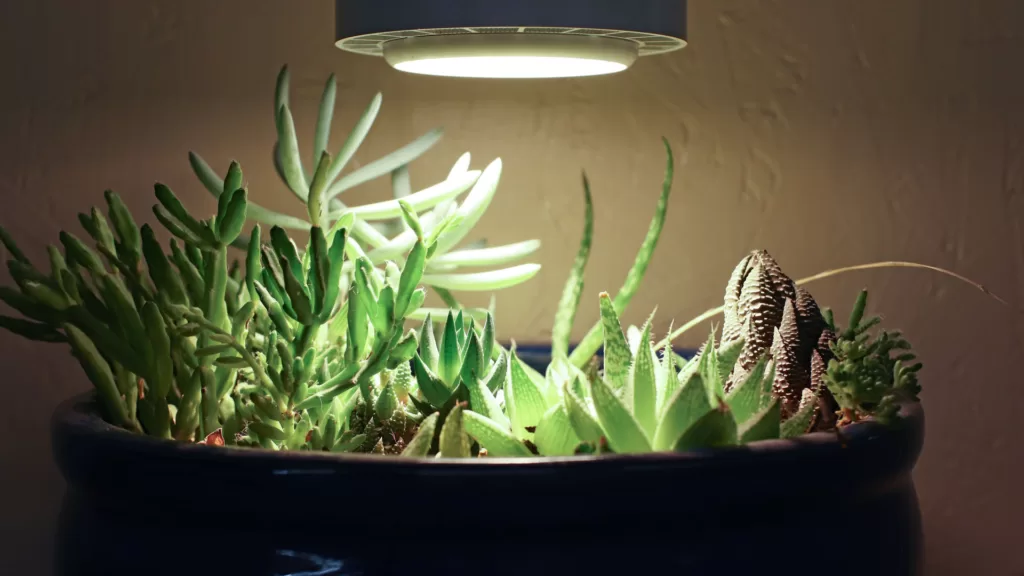Jade plants, also known as Crassula ovata or money plants, are popular houseplants that are easy to care for. Here are a few tips for keeping your jade plant healthy:
- Place your jade plant in a spot with bright, indirect light. They can tolerate some direct sun, but too much can cause the leaves to turn yellow.
- Water your jade plant when the soil is dry to the touch. Jade plants prefer to be on the dry side, so be sure not to over-water. Allow the top inch of soil to dry out before watering again.
- Jade plants prefer well-draining, sandy soil. If your soil is heavy or clay-like, you can amend it with sand or perlite to improve drainage.
- Jade plants like to be on the dry side, so they don’t need high humidity.
- Fertilize your jade plant with a balanced, water-soluble fertilizer during the growing season (spring and summer).
- Keep the leaves clean by wiping them down with a damp cloth.
- Pest control for jade plants is not usually needed, and they are not usually subject to many diseases.
- Jade plants can be propagated by leaf or stem cuttings. Allow the cutting to dry out for a day or two and then stick it in a well-draining soil mix. Keep it in a warm, bright spot and keep the soil moist but not wet until roots form.
Table of Contents
How to grow a jade plant
To grow a jade plant, you will need:
- A jade plant cutting or a small jade plant
- Well-draining, sandy soil
- A container with drainage holes
- Bright, indirect light
Here are the steps to grow a jade plant:
- Choose a container with drainage holes and fill it with well-draining, sandy soil.
- Place your jade plant cutting or small jade plant in the container, making sure the roots are covered with soil.
- Water your jade plant thoroughly after planting, but then wait until the top inch of soil is dry before watering again. Jade plants prefer to be on the dry side, so be sure not to over-water.
- Place your jade plant in a spot with bright, indirect light. They can tolerate some direct sun, but too much can cause the leaves to turn yellow.
- Fertilize your jade plant with a balanced, water-soluble fertilizer during the growing season (spring and summer).
- Keep the leaves clean by wiping them down with a damp cloth.
- Pest control for jade plants is not usually needed, and they are not usually subject to many diseases.
- Keep an eye on your jade plant and adjust its care as needed. As it grows, you may need to repot it in a larger container.
Note: Jade plants are slow growers, so don’t expect it to grow quickly. With proper care, it will eventually become a large, lush plant.

How do you care for a jade plant indoors?
Caring for a jade plant indoors is relatively easy, as they are hardy and low maintenance. Here are a few tips for keeping your indoor jade plant healthy:
- Place your jade plant in a spot with bright, indirect light. They can tolerate some direct sun, but too much can cause the leaves to turn yellow. A south-facing window with sheer curtains is a good spot.
- Water your jade plant when the soil is dry to the touch. Jade plants prefer to be on the dry side, so be sure not to over-water. Allow the top inch of soil to dry out before watering again. In the winter, you may need to water less frequently, as the plant may go dormant.
- Jade plants prefer well-draining, sandy soil. If your soil is heavy or clay-like, you can amend it with sand or perlite to improve drainage.
- Jade plants like to be on the dry side, so they don’t need high humidity.
- Fertilize your jade plant with a balanced, water-soluble fertilizer during the growing season (spring and summer).
- Keep the leaves clean by wiping them down with a damp cloth.
- Pest control for jade plants is not usually needed, and they are not usually subject to many diseases.
- Jade plants can be propagated by leaf or stem cuttings. Allow the cutting to dry out for a day or two and then stick it in a well-draining soil mix. Keep it in a warm, bright spot and keep the soil moist but not wet until roots form.
It’s important to monitor the temperature and humidity levels in your home, as jade plants prefer temperatures between 60-75°F and humidity levels between 30-40%. If the environment is too dry or too cold, the leaves may start to drop or the growth may slow down.
How do I encourage my jade plant to grow?
There are several ways to encourage your jade plant to grow:
- Provide bright, indirect light: Jade plants prefer bright, indirect light, so place them in a spot with a south-facing window with sheer curtains. If your jade plant is not getting enough light, it will grow slowly or the leaves may turn yellow.
- Water and fertilize properly: Water your jade plant when the soil is dry to the touch. Jade plants prefer to be on the dry side, so be sure not to over-water. Fertilize your jade plant with a balanced, water-soluble fertilizer during the growing season (spring and summer).
- Keep the soil well-draining: Jade plants prefer well-draining, sandy soil. If your soil is heavy or clay-like, you can amend it with sand or perlite to improve drainage.
- Repot as needed: As your jade plant grows, it may need to be repotted in a larger container. This will give the roots more room to grow and will also provide fresh soil for the plant.
- Provide optimal temperature and humidity: Jade plants prefer temperatures between 60-75°F and humidity levels between 30-40%. If the environment is too dry or too cold, the leaves may start to drop or the growth may slow down.
- Pinching back: Pinching back the tips of the plant will encourage bushier growth.
- Keep an eye on pests and diseases: Regularly inspecting your plant for pests and diseases and taking action immediately if necessary.
It’s important to note that jade plants are slow growers, so don’t expect rapid growth. With proper care, your jade plant will grow strong and healthy over time.
Can I grow jade plant from cutting?
Yes, you can grow jade plants from cuttings. Here is the process of how to propagate jade plant from cuttings:
- Take a stem cutting from a healthy jade plant, using a sharp, clean pair of scissors or a knife. Cut a stem about 3-4 inches long, making sure to include at least one pair of leaves.
- Allow the cutting to dry out for a day or two. This allows the cut end to callus over, which helps to prevent rotting.
- Dip the bottom of the cutting in rooting hormone powder (optional, but it will speed up the rooting process)
- Stick the cutting in a well-draining soil mix. You can use a commercial cactus or succulent potting mix, or make your own by mixing equal parts of perlite, coarse sand and peat moss.
- Keep the cutting in a warm, bright spot and keep the soil moist but not wet. A humidity dome or plastic bag can be placed over the cutting to keep the humidity levels high.
- Wait for roots to form, which usually takes about 1-2 weeks. You can check for roots by gently tugging on the cutting, or by lifting the pot and looking for new growth.
- Once roots have formed, remove the plastic bag or humidity dome and start to water the cutting as you would a mature jade plant.
It’s important to note that some factors like temperature, humidity and the state of the cutting may affect the rooting process, so it’s better to be patient and not to rush the process. With proper care, your jade cutting will grow into a healthy new plant.

Can I grow a jade plant from a leaf?
Yes, you can grow a jade plant from a leaf. Here is the process of how to propagate jade plant from a leaf:
- Take a healthy leaf from a mature jade plant and gently twist it off the stem. Be sure to include as much of the leaf stem as possible.
- Allow the leaf to dry out for a day or two. This allows the cut end to callus over, which helps to prevent rotting.
- Dip the bottom of the leaf stem in rooting hormone powder (optional, but it will speed up the rooting process)
- Stick the leaf stem in a well-draining soil mix. You can use a commercial cactus or succulent potting mix, or make your own by mixing equal parts of perlite, coarse sand and peat moss.
- Keep the leaf in a warm, bright spot and keep the soil moist but not wet. A humidity dome or plastic bag can be placed over the cutting to keep the humidity levels high.
- Wait for roots to form, which usually takes about 1-2 weeks. You can check for roots by gently tugging on the leaf, or by lifting the pot and looking for new growth.
- Once roots have formed, remove the plastic bag or humidity dome and start to water the leaf as you would a mature jade plant.
It’s important to note that some factors like temperature, humidity and the state of the leaf may affect the rooting process, so it’s better to be patient and not to rush the process. With proper care, your jade leaf will grow into a healthy new plant.
It is also worth to mention that when propagating a jade plant from a leaf, the new plant will take a longer time to mature than propagating from a stem cutting.







